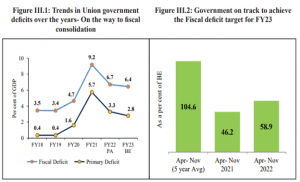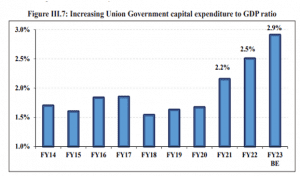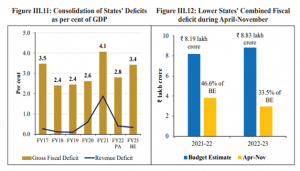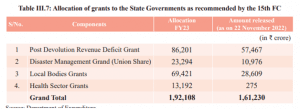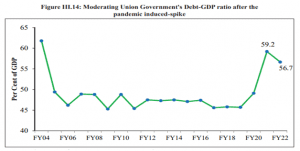TOP 5 TAKKAR NEWS OF THE DAY (22nd JUNE 2023)
1. ST. PETERSBURG INTERNATIONAL ECONOMIC FORUM (SPIEF)
TAG: GS 2: INTERNATIONAL RELATIONS
THE CONTEXT: At the 26th edition of the St. Petersburg International Economic Forum (SPIEF), held recently in Russia’s second-largest city and former imperial capital, the Kremlin made its message clear to the entire world: the economy is holding up despite unprecedented Western sanctions.
EXPLANATION:
- The SPIEF used to be called “Russian Davos” as it was probably the only such elite gathering of global business community leaders in this part of the world.
- At ‘Russian Davos’, Russian President praises ‘economic resilience’, seeks alternative partnerships.
- As the war in Ukraine drags on, taking a heavy toll on both sides of the frontline, Russia, faced with the biggest standoff with the West in its modern history, keeps looking for alternative economic and geopolitical partnerships to navigate the “challenging times”.
- This year’s “wartime” SPIEF turned out less international and lavish than its past editions, for obvious reasons, even though organisers claimed the participation of over 17,000 people from 130 countries, including high-ranking officials from the UAE, Algeria, Armenia, Cuba and delegations from China, India and Brazil.
- According to people close to the organisers, international media outlets were given “special attention” even as recently as last year, when the SPIEF was conducted for the first time since Russia invaded Ukraine, but the decision to not allow them to cover the event was taken for the first time in the forum’s history.
- Despite all odds the Russian economy contracted 2.1% in 2022, which was way less than the 7-10% decline projected by the Ministry of Economic Development and the Bank of Russia, and is forecast to grow by 0.8-1.2% this year.
- The resilience of the Russian economy and the ways to mitigate external factors such as disruption in logistics and exclusion from the global financial system remained the key topics of discussion at the forum, with policymakers and businesses engaged in sometimes heated debates of the ways to go forward.
Alternative routes
- Payments and logistics indeed remain the key obstacles for Russia’s trade with what it sees as friendly countries, many of which are located outside already developed land and maritime routes.
- Moscow is pushing the development of the Northern Sea route, which takes off at Russia’s Murmansk and leads to Shanghai, and the International North-South Transport Corridor (INSTC), a 7,200 km–long multimodal transport route connecting Russia’s north with Iran and India via the Caspian Sea.
- But developing new routes requires immense investments in the infrastructure, something that could be a problem given Russia’s resources are streamlined elsewhere and its ability to borrow money is very limited.
- For the Arctic route, for instance, Russia is planning to construct more than 50 icebreakers and ice-class vessels, ports and terminals, emergency and rescue centres, as well as building an orbital group of satellites. This would require a total investment of 2 trillion roubles ($24 billion) over the next 13 years.
SPIEF
- It is one of the biggest and most important business events in the world.
- Over the past 25 years, the Forum has cemented its status as a leading international event focusing on key issues on the global economic agenda.
- It provides a platform for participants to exchange best practices and expertise in the interests of sustainable development.
- SPIEF has been held annually since 1997. Since 2005, it has been held under the auspices of the President of the Russian Federation, who has also attended each event.
- In 2021, SPIEF was the first business event of such magnitude to be held offline since the unavoidable break caused by the COVID-19 pandemic. The Forum was also notable for its use of cutting-edge digital technology.
- SPIEF 2022 welcomed 14 thousand people from 130 countries. Among them were heads of state and government, senior executives of major corporations, and world-renowned experts in the fields of science and civil society. 81 countries were represented by their official delegations
- The St. Petersburg International Economic Forum (SPIEF) is a unique event in the world of business and economics. SPIEF has been held since 1997, and since 2006, it has been held under the auspices of the President of the Russian Federation, who has also attended each event.
- Over the last 24 years, the Forum has become a leading global platform for members of the business community to meet and discuss the key economic issues facing Russia, emerging markets, and the world as a whole.
- The business programme focus on the global and Russian economies, social issues, and technological development.
2. GLOBAL GENDER INDEX
TAG: PRELIMS PERSPECTIVE
THE CONTEXT: According to recently released global gender index, The country had improved by 1.4 percentage points from 2022 figures, marking a partial recovery towards its 2020 parity level; it had closed 64.3% of the overall gender gap but had reached only 36.7% parity in economic participation.
EXPLANATION:
- India was ranked at 127 out of 146 countries in terms of gender parity an improvement of eight places from last year, according to the annual Gender Gap Report, 2023 of the World Economic Forum (WEF).India was ranked 135 in the report’s 2022 edition.
- The country had attained parity in enrolment across all levels of education.
- India had closed 64.3% of the overall gender gap, the report said. However, it underlined that India had reached only 36.7 % parity on economic participation and opportunity.
- The index ranked India’s neighbours Pakistan at 142, Bangladesh at 59, China at 107, Nepal at 116, Sri Lanka at 115 and Bhutan at 103.
- Iceland is the most gender-equal country in the world for the 14th consecutive year and the only one to have closed more than 90% of its gender gap, according to the report.
Global Gender Gap Index Rankings
- Chart shows how rankings have changed for top 15 most populous countries between 2022 and 2023.
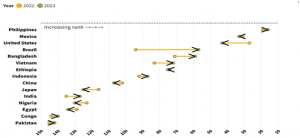
Wages and income
- In India, while there had been uptick in parity in wages and income, the share of women in senior positions and technical roles had dropped slightly since the last edition.
- On political empowerment, India has registered 25.3% parity, with women representing 15.1% of parliamentarians the highest for the country since the inaugural report in 2006.
- Out of the 117 countries with available data since 2017, 18 countries including Bolivia (50.4%), India (44.4%) and France (42.3 %) have achieved women’s representation of over 40% in local governance.
- For India, the 1.9 percentage point improvement in sex ratio at birth had driven up parity after more than a decade of slow progress, the report said.
Skewed sex ratios
- However, it also said that for Vietnam, Azerbaijan, India and China, the relatively low overall rankings on the Health and Survival sub-index is explained by skewed sex ratios at birth.
- Compared with top scoring countries that register a 94.4% gender parity at birth, the indicator stands at 92.7% for India (albeit an improvement over the last edition) and below 90% for Vietnam, China and Azerbaijan,” it said.
- Overall, the Southern Asian region has achieved 63.4% gender parity, the second-lowest of the eight regions.
- The score in South Asia has risen by 1.1 percentage points since the last edition on the basis of the constant sample of countries covered since 2006. The improvement is partially attributable to the rise in scores of populous countries such as India, Pakistan and Bangladesh.
Global Gender Gap Index
- Global Gender Gap Index creates an urgent case for renewed and concerted action. Accelerating progress towards gender parity will not only improve outcomes for women and girls but benefit economies and societies more widely, reviving growth, boosting innovation and increasing resilience.
- The index provides a tool for consistent tracking of gender gaps across the economic,political, health and education spheres, and is designed for leaders to identify areas for individual and collective action.
- The Global Gender Gap Index annually benchmarks the current state and evolution of gender parity across four key dimensions (Economic Participation and Opportunity, Educational Attainment, Health and Survival, and Political Empowerment).
- It is the longest-standing index tracking the progress of numerous countries’ efforts towards closing these gaps over time since its inception in 2006.
- The Global Gender Gap Index measures scores on a 0 to 100 scale and scores can be interpreted as the distance covered towards parity (i.e. the percentage of the gender gap that has been closed). Cross-country comparisons support the identification of the most effective policies to close gender gaps
3. INDIA’S JET ENGINE DEAL WITH THE U.S.
TAG: GS 2: INTERNATIONAL RELATIONS
THE CONTEXT: A landmark agreement to facilitate the transfer of at least 11 critical jet engine technologies is likely to be announced during Prime Minister ongoing official State Visit to the United States.
EXPLANATION:
- A mega defence deal for the manufacture of fighter jet engines in India is expected to dominate the agenda of Prime Minister first state visit to the United States recently.
- According to sources, India and the U.S. have “almost” finalised details and the White House is set to sign off on the deal that will allow American manufacturing company General Electric (GE) Aerospace to share critical technology with Hindustan Aeronautics Limited (HAL) for the joint production of GE-F414 jet engines that will power indigenous Light Combat Aircraft (LCA) Tejas Mk-II.
- The proposed agreement has evoked considerable interest in India and beyond, with experts terming it a significant step for bilateral defence and high-tech cooperation amid China’s growing influence and global technological dominance.
Tracing India’s quest for indigenous aero-engines
- India’s pursuit of self-reliance and technological transformation in the defence sector stems from the necessity to deal with the dual threat along its borders and maintain strategic autonomy in the emerging world order.
- Over the years, India has seen substantial accomplishments in various helicopter, missile and space programmes. India has also designed and built a fighter jet but hasn’t achieved much success in producing engines to power these aircraft.
- The quest began in the 1960s with the country’s first indigenous fighter, HF-24 Marut. The aircraft was envisioned as a supersonic jet, but failed to achieve its potential for want of a suitable engine and was eventually phased out.
- A few decades later, India sanctioned the Kaveri programme to develop an indigenous military gas turbine engine for the ambitious LCA project.
- With Kaveri still a work in progress, India shortlisted American GE-F404 engines for LCA Tejas Mark-1 as an interim measure. In 2010, the Aeronautical Development Agency (ADA) selected the more powerful variant, F414 engines, to power Tejas Mark-2. . In a media release, the company stated that it would supply an initial batch of the selected variant and the rest will be manufactured in India under a transfer of technology (ToT) arrangement.
- As a sign of deepening ties and with an eye on China, the U.S. recognised India as a “major defence partner” in 2016, which paved the way for sharing of critical military equipment and technology. It sought to put India on par with NATO-member countries.
What are the features of the F414 engine?
- India has shortlisted the F414-INS6 model for LCA Mk-II for the IAF, and the export market in the future. An advanced and more efficient version of the F404 engines conceived in the early ‘90s, F414 engines currently power the LCA Tejas.
- At the time the deal was struck, in 2010, the aerospace giant said that the Indian variant will include a fully digital electronic system to control different aspects of the engine, known as the Full Authority Digital Engine Control (FADEC), along with added single-engine safety features customised to meet the country’s defence requirements.
The engine’s main specifications are:
- An afterburner turbofan 154-inch long engine in the 22,000-pound (98 kilonewtons) thrust class — 35% more thrust than the F404 engines. The afterburner tech increases the thrust of a jet engine for short periods to improve an aircraft’s take-off, climb, and combat performance.
- A thrust-to-weight ratio of 9:1, which is an indicator of aircraft propulsion. The higher an aircraft’s thrust-to-weight ratio, the higher its acceleration, excess thrust, and rate of climb.
- Has low maintenance costs and boasts of unrestricted engine performance on demand with more than five million engine flight hours.
- Is more reliable and has greater engine durability with a reduced life-cycle cost. The engine is designed to maximise time on wings, which is a measure of the operational reliability of an engine.
The F414 engines power several advanced, next-generation combat aircraft around the globe. Currently, these engines are operational in Boeing’s F-18 Super Hornet twin-jet fighters and Saab’s JAS 39-Gripen (Next Generation) single-engine combat aircraft and are being integrated into aircraft being built in South Korea. As per estimates, GE has produced F414 engines for F-18 Super Hornets at $3.71 million
How crucial is the deal for India?
- India will become the fifth country in the world to produce jet engines once the deal is sealed, joining the U.S., Russia, France and the U.K.
- Besides boosting its military capabilities and growing defence manufacturing at a time when the world is reeling due to the impact of the Russia-Ukraine conflict, the agreement will help replace the fleet of ageing Russian fighters.
- The jet engine deal will take India’s capability in the aircraft industry to a new level, and I think from a U.S. perspective, it will mean jobs. The deal also sends a message to the Chinese that the relationship between India and the U.S. is not just a surface relationship and is getting deeper.
- Addressing India’s dependence on Russian imports, the report added, “Expanding the type and sophistication of the arms the U.S. is willing to sell to India may elevate the U.S. as an alternative to India’s traditional dependence on Russian hardware, particularly amid rising concerns about Russia’s strategic embrace of China, and growing questions about the quality, reliability, and capacity of a Russian defence industrial base increasingly strained by the Ukraine conflict.”
4. PM GATI SHAKTI SCHEME
TAG: PRELIMS PERSPECTIVE
THE CONTEXT: CII moots that government could share information from portal after blocking out ‘sensitive’ data to facilitate greater private capital investments in infrastructure projects. Industry eyes access to Gati Shakti portal to boost capex in connectivity, allied sectors.
EXPLANATION:
- Industry is hopeful that the government may soon agree to open up access to the PM Gati Shakti portal developed for planning multi-modal infrastructure projects, thus helping facilitate greater private capital investments especially in connectivity projects that are seen as critical to sustain the economy’s momentum.
- Unveiled in October 2021, the PM Gati Shakti digital platform brings together 16 ministries, including Railways and Roadways, so as to spur an integrated and coordinated approach to planning and implementing infrastructure connectivity projects across the country.
- So far, access to portal’s data, which include detailed maps with existing economic and social infrastructure as well as upcoming projects, is restricted to Central and State government agencies and departments.
Pradhan Mantri Gati Shakti Scheme:
- The Pradhan Mantri Gati Shakti National Master Plan is a central government project, aimed to revolutionise infrastructure in India.
- On October 13, 2021, PM Modi launched the Pradhan Mantri Gati Shakti (PMGS) scheme, aimed at breaking inter-ministerial silos and to integrate the planning of infrastructure projects.
- Gati Shakti is one of the four big priorities for the government. “The touchstone of the Gati Shakti master plan will be world-class, modern infrastructure and logistics synergy among different modes of movement of both, people and goods, and location of projects.
- The Gati Shakti national master plan, spruced by seven engines of infrastructure, will go a long way in developing multi-modal network to create world-class infrastructure with full support on planning, financing, innovation and technology.
How does it work?
- To get the mission going, a centralised portal will be set up to unite the infrastructural initiatives planned and initiated by 16 central ministries and departments, including railways, roads and highways, petroleum and gas, power, telecom, shipping and aviation, etc.
- By putting in place better coordination among these ministries, the Gati Shakti portal, which also aims at a centralised transportation and logistics grid, will enable smoother information flow and expedite project clearance process.
- Large-scale infrastructure projects that will now implimented according to the prescriptions laid in the Gati Shakti master plan include flagship projects like Bharatmala, Sagarmala, UDAAN, expansion of railway network, inland waterways and Bharat Net.
- Also expected to result in employment generations for millions, the Gati Shakti masterplan will work to meet the three basic targets— seamless multimodal connectivity to facilitate easy movement of goods and people; improved prioritisation, optimal usage of resources, timely creation of capacities; and resolution of issues such as disjointed planning, standardisation and clearances.
Gati Shakti mission: Key objective
- With the broad objective of making products manufactured in the country more competitive by cutting down the logistics costs and improving supply chains, the Pradhan Mantri Gati Shakti scheme will help India attract investment from all over the world for improving the infrastructure of the country.
- It begs mention here that logistics and supply chain costs account for around 12% of the gross domestic product (GDP) in India at present. This is much higher when compared to the global average of 8%.
- Factors that lead to this higher expense are excessive dependence on transportation by road, and under-utilisation of waterways, air and rail networks. Overall, these factors hike rates of Indian produces when compared to other countries, making them less competitive globally.
- The Gati Shakti Plan consolidates infrastructure projects in specific corridors, and will help various ministries plan projects together without getting hampered by the specific/time-consuming approval processes,” Brickwork Ratings said in a note while statting that the pan will be game-changer in the space of infrastructure development.
PM Gati Sghakti plan goals
Mentioned below are the various targets that will be achieved under the Gati Shakti scheme:
*Roadways capacity to be increased with the national highway network to touch the 2 lakh-km mark.
*Aviation will receive a massive boost, with around 200 new airports, heliports and water aerodromes envisioned in the plan.
*Capacity of railways transport cargo to be increased to around 1,600 tonne by FY25
*Ease in the electricity access with the transmission network to be increased to 454,200 circuit km
*Renewable capacity to be increased to 225 GW by FY25.
*Also around 17,000 kms of gas pipelines will be completed in the same year.
*4G connectivity for the villages by FY22
*20 new mega food parks
*11 industrial corridors and two new defence corridors in Tamil Nadu and Uttar Pradesh
*202 fishing clusters/harbours/landing centres
5. U.S. FEDERAL RESERVE RATE HIKE CYCLE
TAG: GS 3: ECONOMY
THE CONTEXT: The U.S. Federal Reserve (Fed) recently paused its rate hike cycle by deciding to hold interest rates after ten rate hikes since March 2022. The central bank kept its target for the benchmark federal funds rate between 5% and 5.25% until its next policy meeting. Many analysts, however, expect the Federal Reserve to resume its rate hikes and some even expect the federal funds rate to hit 6% soon.
EXPLANATION:
What does a pause in rate hikes mean?
- Central banks around the world try to steer their economies primarily by targeting interest rates at which lending/borrowing happens in the short-term credit markets.
- For instance, if a central bank wants to lower short-term interest rates, it can enter the market where banks borrow funds for their short-term needs with fresh funds, bid up the price of these loans and thus lower interest rates.
- The fresh money injected into the banking system, in turn, would tend to percolate into the economy and cause prices to rise in the wider economy.
- A central bank can thus use monetary policy to influence prices in the wider economy. And keeping inflation within a certain target range is a major goal of central banks.
- Another policy goal that central banks try to meet along with the inflation target is to keep the economy operating at its full capacity wherein all resources are fully employed. Many economists believe that there is a trade-off between inflation and unemployment. According to this framework, if inflation falls too low, this can cause a rise in unemployment and hence unused capacity.
- So, the agenda of most central banks is to keep inflation up at a certain level at which the economy functions at full capacity. Inflation above a certain level, however, is seen as having no positive effect on economic activity.
Why did the Fed decide to hold rates steady?
- It should be noted that the Fed began raising interest rates after inflation hit multi-decade highs as the U.S. economy slowed down due to the Covid-19 lockdowns and the U.S. central bank responded by flooding the economy with massive amounts of dollars.
- A rapid withdrawal of monetary support can cause prices to undershoot the Fed’s inflation target, something the U.S. central bank may not want.
What lies ahead?
- The Fed’s rate hike pause is no guarantee that there won’t be any future rate hikes in the short term. Other western central banks have continued to raise rates after a pause, and major central banks such as the European Central Bank and the Bank of England continue to raise interest rates as inflation continues to be a challenge in their economies.
- Many economists over the last year or so have been trying to predict a recession in the U.S. without much success. It can only be said that the U.S. Federal Reserve’s actions are likely to be influenced by several factors including inflation, economic growth and political compulsions ahead of the U.S. Presidential elections next year.
- The Fed’s rate hike pause is no guarantee that there won’t be any future rate hikes in the short term. Other western central banks have continued to raise rates after a pause, and major central banks such as the European Central Bank and the Bank of England continue to raise interest rates as inflation continues to be a challenge in their economies.
